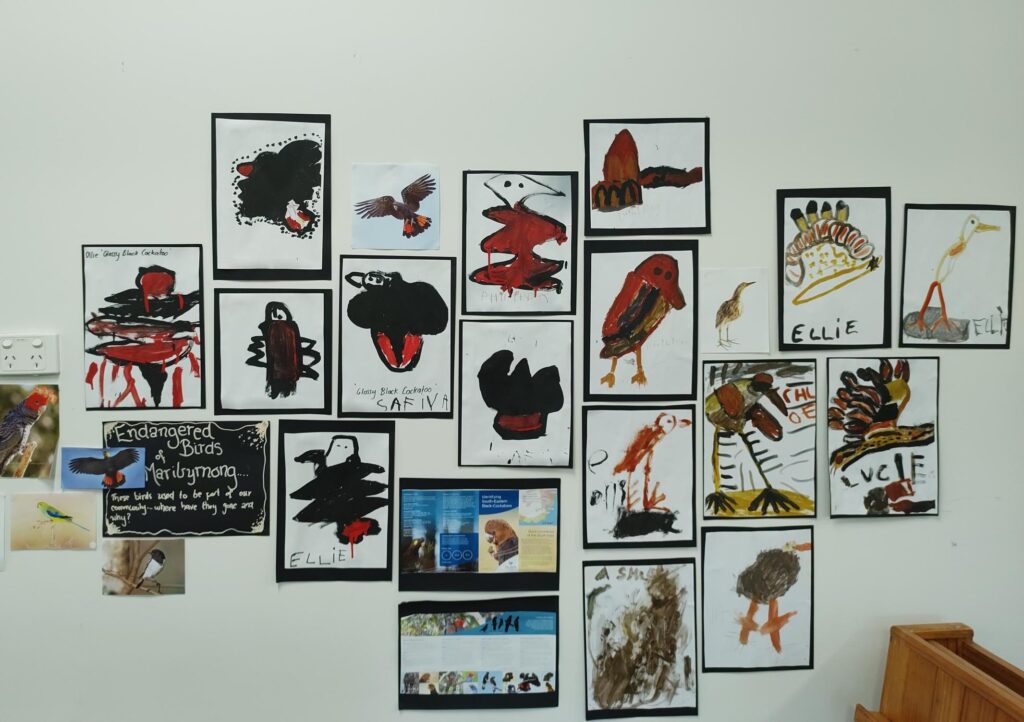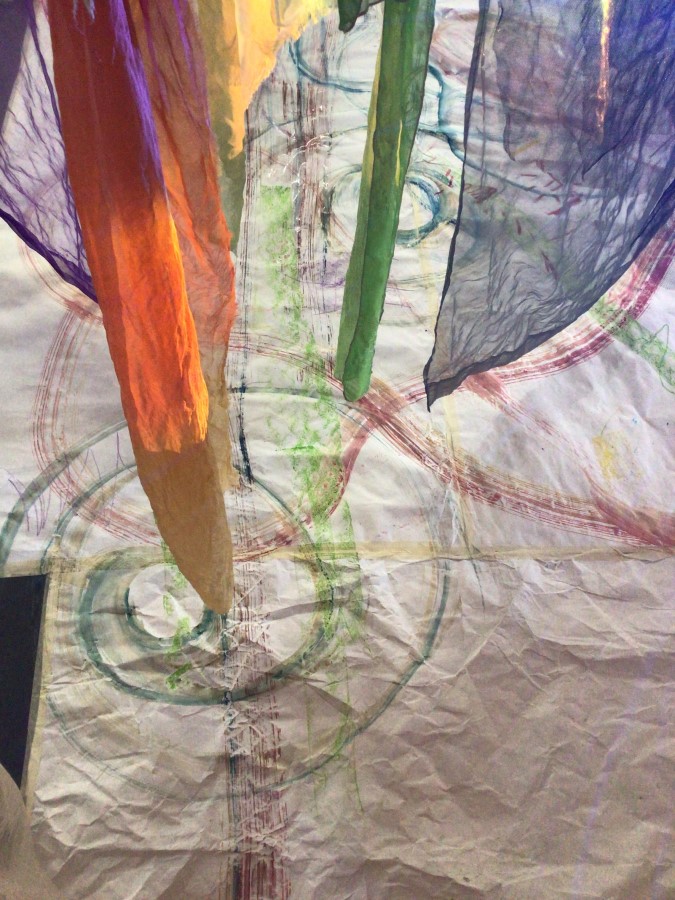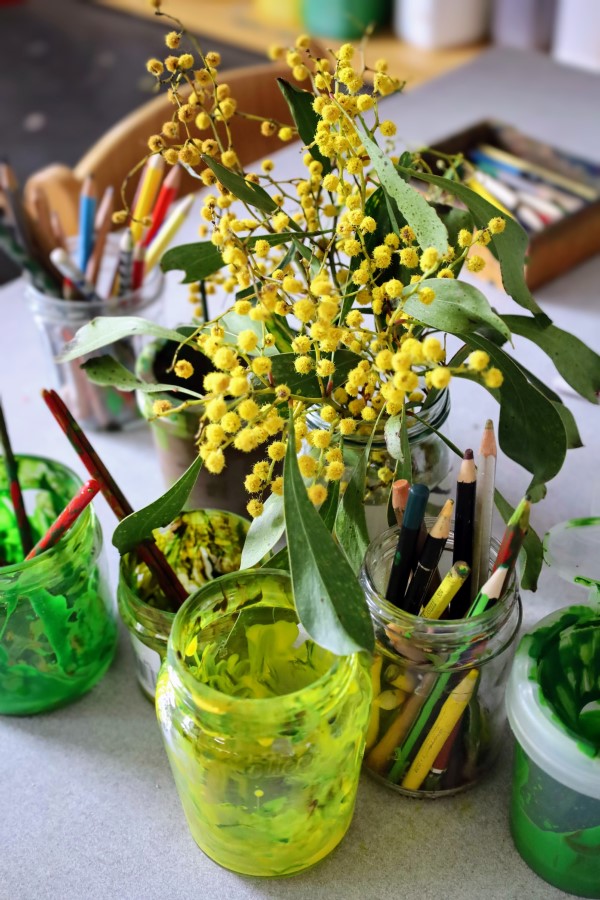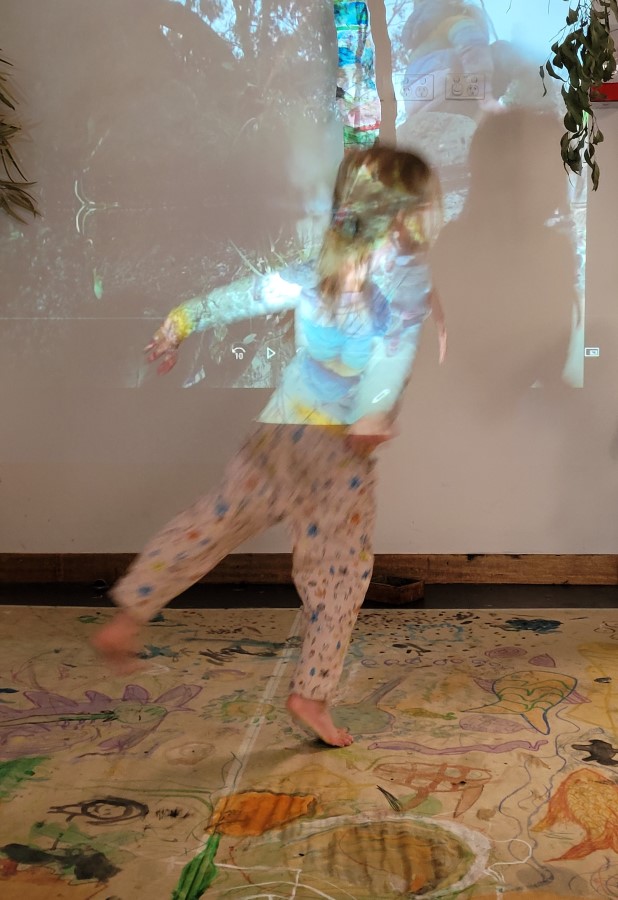Whatever the medium, the arts are recognised as an important learning tool and vehicle for fostering creativity.
At Gowrie Clare Court, studio work is vast and varied, with a strong focus on process, rather than product. Educator Sarah Gardiner says creativity is an important skill to build and nurture. “This helps develop divergent thinking and cognitve skills, such as problem-solving,” she says. “It really sets children up for later in life.”
Educator Gini Merange says the arts allow children to communicate more complex ideas and thoughts in a direct way. “They also help connect what’s happening in the classroom to a broader audience,” she says.
Process versus product
Process art focuses on the creative thinking of children, which allows them the freedom to imagine and experiment. In contrast, asking children to create a certain product, based on preconceived ideas, stifles imagination and can cause frustration. “It’s more about how you think,” Sarah says. “We might teach or demonstrate how to use different mediums, but we set the children up so they can then break the rules.”
Sarah says part of the process often involves introducing the children to culture, whether it’s listening to classical music, watching clips of Bangarra Dance Theatre, or studying individual artists.
Inspired by Yayoi Kusama’s Obliteration Room, children at Clare Court recently created their own ‘obliteration space’ at the service.
“It was an amazing group piece where we worked collaboratively, exploring the idea that we’re all tiny dots in the universe – individual, but all connected,” Sarah says. “Other groups contributed to the work and we had lots of interesting conversations.”
Prompts and provocation
Gini says providing a small provocation is a great way to help children overcome the hesitation that can arise when confronted with a blank canvas.
“It might be a large piece of paper that we’ve drawn a wavy line down the middle of,” she says. “Children can then take it in any direction they like.
“Recently we had a log set up with clay for the children to work with and found them making little mushrooms and fairy doors for the log. It’s about leaving things open enough so there’s no wrong way for it to be done.”
Another idea is to provide a limited colour palette, something Gini tried recently when engaging the children in a series of bird paintings, following the Aussie Backyard Bird Count.
“Something really shifted in the way the children viewed the project and we saw a lot of detail coming out through the use of those few colours,” she says.

Modes of expression
When it comes to different mediums, Sarah says anything goes. “We use a lot of watercolours, pastels and charcoal, and have started doing collage, using leaves and flowers we find on the ground when we’re out and about,” she says. “Here, we’ve been inspired by Jeannie Baker’s children’s books, including Circle, Window, and Where the Forest Meets the Sea.”
Gini says taking the watercolour paints outside inspires children to use them in different ways. “They will paint on the logs or found materials, or fallen leaves and sticks. The process develops with the environment they’re in.”
Visual arts, craft, music, dance, drama and storytelling are just some of the mediums introduced to engage children with the world around them and encourage expression.
Sarah and Gini both have backgrounds in music and regularly incorporate music, drama and movement into their practice as a way of igniting the different senses.
Material world
Early Childhood Teacher Carley Rawle has studied fine art and art therapy, as well as the Reggio Emilio approach, and believes there is a strong interplay between the creator and the materials.
“We let the materials and children speak during the creative process and we listen to what the materials can teach us about our relationships to the environment,” Carley says.
Carley says teachers and students navigate curricula content through the arts, which allows children to manifest their creative thinking.
“We recognise that art demands we question the social-cultural-political world around us. So we move with materials experientially and ask, ‘what might the histories of charcoal invite us to attend to? How might clay active the possibility to negotiate concepts of power? How will materials move us to reconsider the world (a)new?’.”
Fabric, music, light, paint, floor and children were part of a recent project Carley introduced at Clare Court, which allowed for “a multiplicity of expression”. Here is Carley’s reflection on the project:
In the studio, paint moves along the floor, circular lines (re)configure our ideas of what painting is as bodies’ roll, step, bend, sway, twist, and twirl with brushes. Children improvise and dance in motion with fabric. Inspired, children co-compose the life worlds of local insects, fabric spins, cocoons and hives transpire. The resonance of spring is felt as colour enlivens memories of family holidays; palm trees emerge in pencil.
In these moments teachers question how might movement generate visual arts practices? What will experimental pedagogies teach us about how children learn? Importantly, the studio activates emerging material-child encounters that situate children as artists and researchers in relationship with the world.


